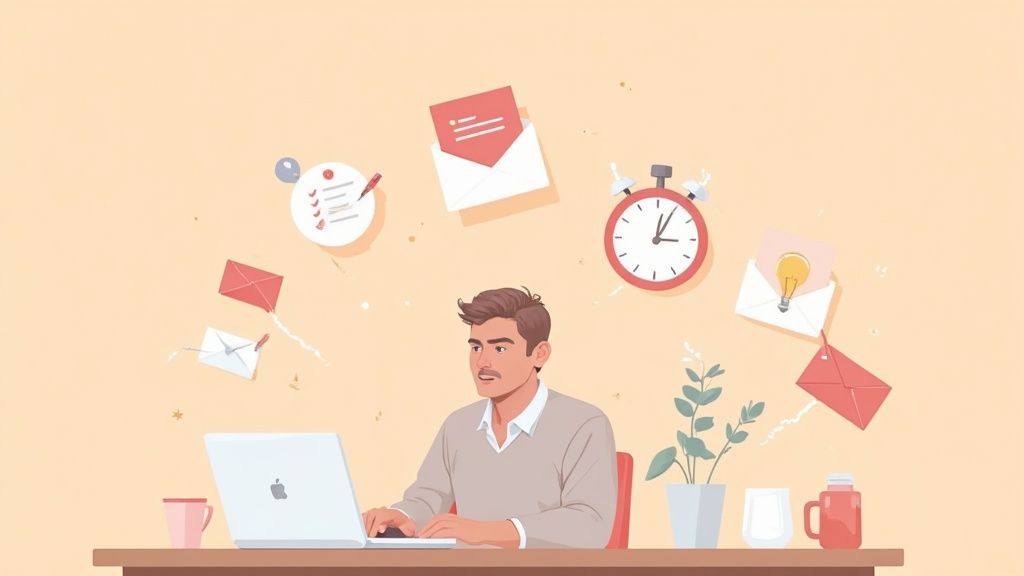
Top 7 Professional Email Writing Tips for Influencers (2025)
Published
Unlock Your Next Opportunity: Why Email Mastery is Crucial in Influencer Marketing
In the fast-paced world of influencer marketing, your inbox is your command center. Every email you send, from a cold outreach to an established creator to a campaign report for a major brand, is a direct reflection of your professionalism and competence. Generic, sloppy emails get deleted; well-crafted, strategic ones build careers and close deals. The ability to write a professional email is not just a soft skill; it's a core competency that separates thriving marketing professionals from the rest.
This guide provides seven essential professional email writing tips tailored specifically for the unique challenges of influencer marketing. We'll move beyond the basics, offering actionable strategies and real-world examples to help you craft emails that command attention, foster strong relationships, and drive campaign success. True email mastery also involves foundational elements like mastering your email 'from' address format, which sets the initial impression before your message is even opened.
Whether you're hunting for a new role, pitching a new collaboration, or managing a roster of top-tier talent, these tips will sharpen your most critical communication tool and help you achieve your goals. Let's dive into the strategies that will transform your outreach.
1. Craft Hyper-Specific Subject Lines That Cut Through the Clutter
In the fast-paced world of influencer marketing, your email subject line is the single most important element determining whether your message gets opened or ignored. Influencers, brand managers, and agency contacts are inundated with hundreds of emails daily. A generic subject like "Collaboration Inquiry" or "Quick Question" lacks urgency and specificity, making it easy to archive or delete without a second thought. To stand out, your subject line must function as a concise, compelling summary of your email’s value proposition.
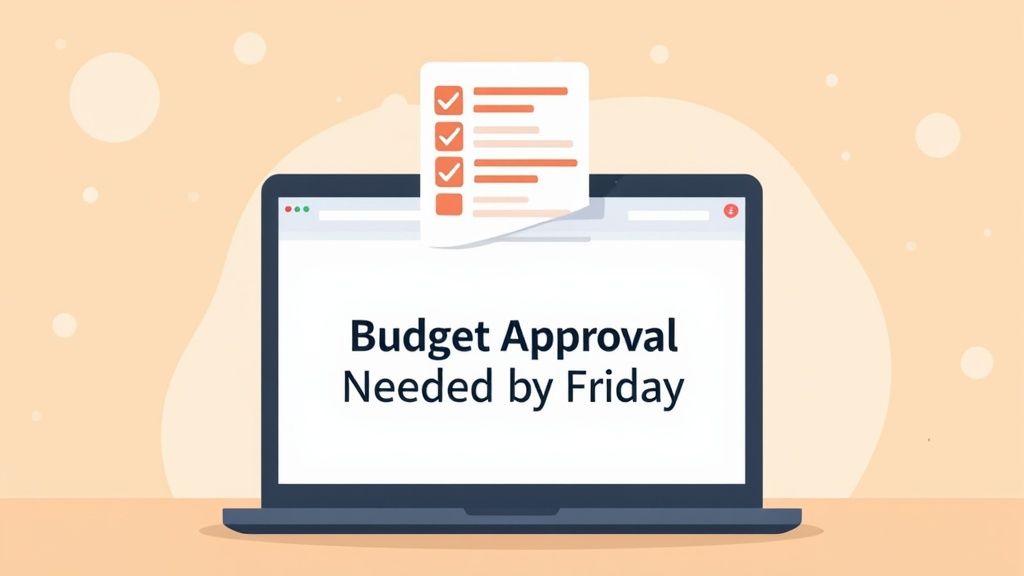
Think of it as the headline for your proposal. It needs to be specific enough to be understood at a glance, intriguing enough to spark curiosity, and professional enough to be taken seriously. This level of detail respects the recipient's time and immediately frames your message as important and well-thought-out, dramatically increasing your open rates and setting a positive tone before the email is even read. Mastering this skill is a cornerstone of professional email writing tips for anyone in a high-volume communications role.
How to Implement Specific Subject Lines
The key is to front-load the most critical information. Your goal is to give the recipient all the context they need without even opening the email.
- For Influencer Outreach: Include the offer type, brand name, and the influencer's handle for personalization.
- Example:
Paid Collab Inquiry: Aura Skincare x @[Influencer's Handle]
- Example:
- For Campaign Reporting: Clearly state the purpose, campaign, and brand involved.
- Example:
Q3 Campaign Report & Metrics: Aura Skincare x SummerGlow
- Example:
- For Internal Teams: Specify the required action, the project, and the deadline.
- Example:
ACTION REQUIRED: Approve Influencer Shortlist for SummerGlow by EOD
- Example:
- For Job Applications: State the role you're applying for and your name to make it easy for recruiters.
- Example:
Application for Influencer Marketing Manager: Jane Doe
- Example:
Advanced Subject Line Tips
To further optimize your approach, consider using brackets to call out key details like [URGENT] or [RESPONSE NEEDED]. When forwarding an email chain, always edit the subject line to reflect the new purpose or audience, such as changing Fwd: Fwd: Influencer List to Final Influencer Selections for Client Approval. For those in outreach-heavy roles, it's beneficial to study the psychology behind what makes people click. For more specific advice on optimizing this critical element, explore articles on effective email subject lines to gain an edge in your campaigns.
2. Use Professional Greetings and Closings
The greeting and closing of your email act as the frame for your entire message, setting the professional tone and shaping the recipient's perception of you. In the high-stakes, relationship-driven field of influencer marketing, these details are far from trivial. A greeting that is too casual can seem disrespectful, while one that is overly formal might feel cold or out of touch. The right greeting establishes rapport, and the right closing guides the recipient toward the desired action, reinforcing your professionalism and attention to detail.
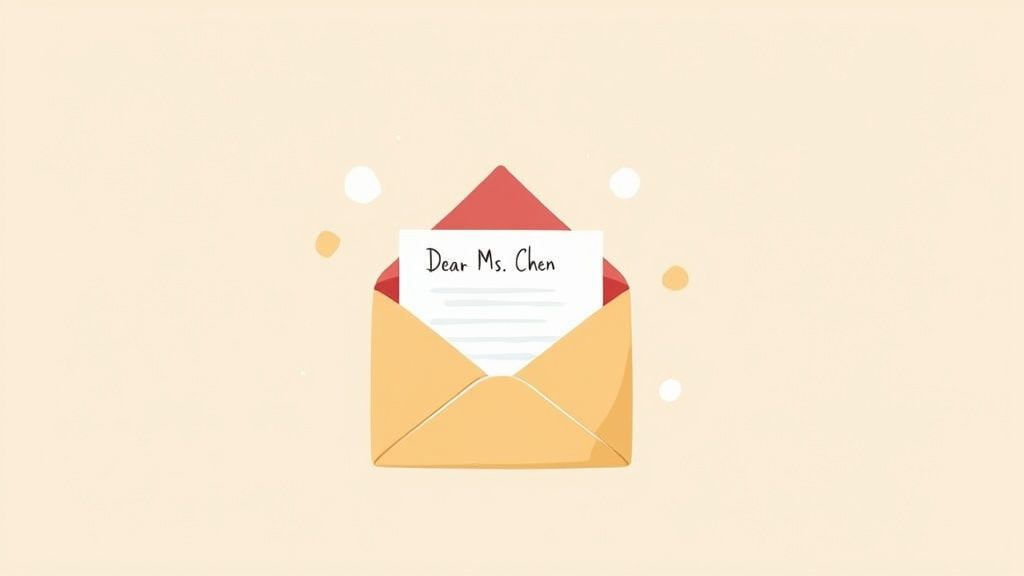
Think of these elements as the digital equivalent of a firm handshake and a polite farewell. They bookend your communication, ensuring it starts on the right foot and ends on a clear, positive note. Getting this right demonstrates social and professional awareness, a critical skill when communicating with diverse stakeholders like influencers, brand executives, and agency partners. Mastering this aspect of professional email writing tips shows you understand the nuances of business etiquette, building trust from the very first word.
How to Implement Professional Greetings and Closings
The key is to match the formality of your greeting and closing to your relationship with the recipient and the context of the message. Always err on the side of being more formal in initial correspondence.
- For First Contact or Formal Scenarios: Use a traditional salutation and a respectful closing. This is ideal for initial outreach to a new brand contact or a high-level executive.
- Greeting Example:
Dear Mr. Johnson,orDear Hiring Manager, - Closing Example:
Sincerely,orRespectfully,
- Greeting Example:
- For General Professional Correspondence: A semi-formal approach is a safe and versatile default for most day-to-day communications with established contacts.
- Greeting Example:
Hello Sarah,orGood morning David, - Closing Example:
Best regards,orAll the best,
- Greeting Example:
- For Internal Teams or Familiar Contacts: Once a rapport is established, a more casual tone is often appropriate and helps build camaraderie.
- Greeting Example:
Hi Team,orHi Alex, - Closing Example:
Thanks,orCheers,
- Greeting Example:
Advanced Salutation and Sign-Off Tips
To refine your approach, mirror the recipient’s level of formality. If they sign off with "Best," it’s generally safe for you to do the same in your reply. For international communications, "Kind regards" is a universally accepted and professional closing. Avoid overly familiar greetings like "Hey" or modern slang unless you have a very strong, established relationship. Finally, ensure your email signature is professional, including your full name, title, and company. For more on the established rules of business communication, resources from platforms like the Harvard Business Review offer excellent guidance on navigating these nuances.
3. Keep It Concise and Scannable
In the high-volume communication environment of influencer marketing, brevity is a sign of respect for the recipient's time. Professionals, from influencers to brand managers, are constantly triaging their inboxes. A dense, novel-like email is likely to be skimmed over or, worse, ignored completely. Adopting a concise and scannable format ensures your key messages are absorbed quickly and efficiently. This approach, championed by communication leaders at companies like Amazon and Google, prioritizes clarity and actionability over exhaustive detail.
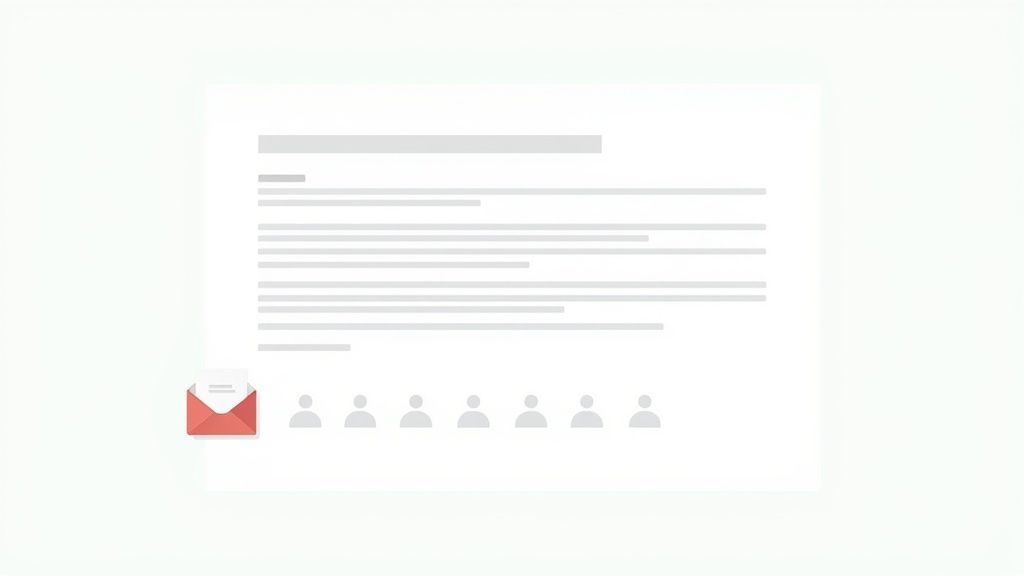
This method involves breaking down information into digestible pieces, using visual cues like bullet points and bold text to guide the reader’s eye. The goal is to make it effortless for the recipient to identify the main point, understand what is being asked of them, and take the next step. By structuring your emails for scannability, you significantly increase the likelihood of getting a prompt and relevant response. Mastering this is one of the most impactful professional email writing tips for improving communication effectiveness.
How to Implement a Concise and Scannable Structure
The core principle is to make your email as easy to read as a well-designed webpage. Use structure and formatting to highlight the most crucial information.
- Break Down Long Explanations: Instead of a dense paragraph explaining a campaign launch, use a numbered list for the sequence of events.
- Example: "The campaign will launch in three phases: 1) Teaser content on May 5th, 2) Main product reveal on May 7th, and 3) Follow-up posts on May 10th."
- Use Bullet Points for Agendas or Lists: Clearly outline discussion topics or deliverables.
- Example: "For our call, let's discuss:
- Final influencer selections
- Draft content review
- Timeline for posting"
- Example: "For our call, let's discuss:
- Highlight Key Actions: Use bold text to draw immediate attention to deadlines or required actions.
- Example: "Please provide your feedback on the attached creative brief by EOD Friday."
- Keep Paragraphs Short: Stick to a maximum of 2-3 sentences per paragraph to create white space and improve readability.
Advanced Conciseness Tips
To elevate your email writing, think like a journalist and put the most critical information first, a technique known as the inverted pyramid. Apply the "one-screen rule" whenever possible, aiming to keep the entire message visible on a standard screen without scrolling. If a topic is complex, consider whether an email is the right medium or if a brief call or a separate document is more appropriate. Always read your email aloud before sending; this simple check helps you identify run-on sentences and areas that can be simplified for greater impact.
4. Proofread and Edit Before Sending
In the fast-moving world of influencer marketing, speed can feel like the top priority, but accuracy and professionalism are what truly build lasting relationships and brand credibility. A single typo, an incorrect name, or a forgotten attachment can instantly undermine your message, making you appear careless or unprofessional. Thoroughly proofreading and editing every email before it leaves your outbox is a non-negotiable step that safeguards your reputation and prevents costly misunderstandings. This final check ensures your communication is clear, correct, and polished every time.
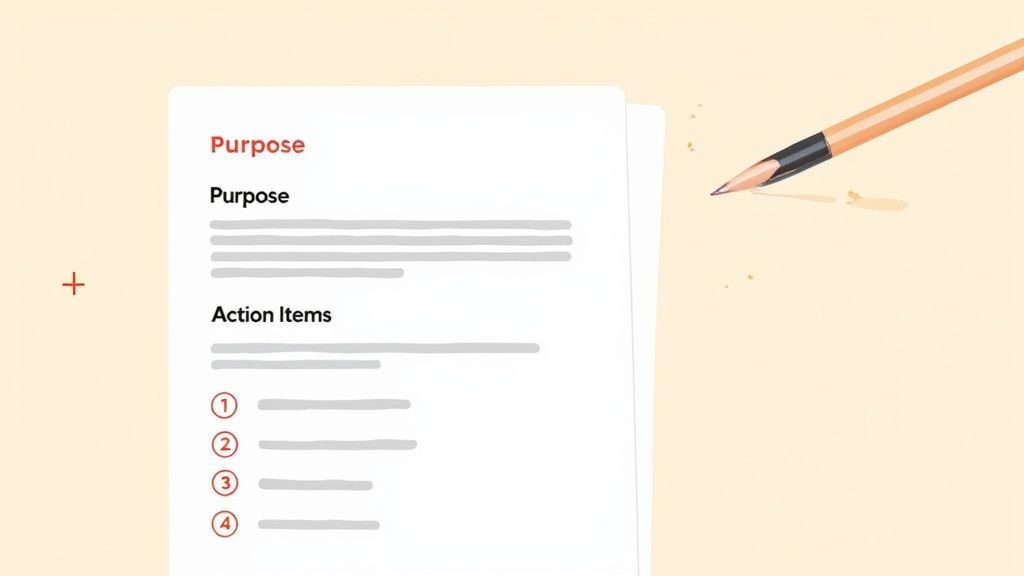
This process is more than just a quick spell-check. It's a comprehensive review of your email's content, tone, and technical details. For high-stakes communications, like sending a campaign proposal to a major brand or a contract to an influencer, a meticulous edit is your last line of defense against errors that could damage partnerships or lose opportunities. Integrating this discipline into your workflow is one of the most critical professional email writing tips you can adopt, ensuring every message you send reinforces your competence.
How to Implement a Proofreading Process
The key is to create a systematic review process that you follow for every email, especially those with high importance.
- Check the Basics: Use a spell-checker, but don’t rely on it exclusively. Manually scan for grammatical errors, typos, and awkward phrasing that software might miss.
- Verify Key Details: Double-check all names, titles, dates, and figures. Confirming that "Jane Doe" is not spelled "Jayne Doh" shows respect and attention to detail.
- Confirm Attachments: Ensure any files mentioned in the email (e.g., "Please see the attached contract") are actually included. Forgetting them forces an awkward follow-up email.
- Read It Aloud: Reading your email out loud is an excellent technique for catching unnatural sentence structures and clunky phrasing that can be easily missed when reading silently.
Advanced Editing Tips
To elevate your editing, shift your perspective and use helpful tools to catch what your own eyes might skip over.
- Step Away Briefly: Wait 5-10 minutes between writing and proofreading. This short break allows you to review the email with a fresh perspective, making it easier to spot errors.
- Adopt the Recipient's View: Reread the email as if you were the person receiving it. Is the call to action clear? Is the tone appropriate? Does it answer all potential questions?
- Leverage Technology: Use tools like Grammarly or the Hemingway Editor to get an objective analysis of your writing, highlighting complex sentences, passive voice, and common errors.
- Get a Second Opinion: For crucial emails like proposals, job applications, or client reports, ask a trusted colleague to give it a quick review. This is especially important for high-stakes documents, and you can explore more about perfecting your professional documents by reviewing tips on crafting an expert account manager cover letter.
5. Use Proper Email Etiquette (Reply All, CC, BCC)
In the collaborative landscape of influencer marketing, mastering the use of Reply All, CC (Carbon Copy), and BCC (Blind Carbon Copy) is a fundamental skill. These seemingly small features govern information flow and privacy. Misusing them can lead to cluttered inboxes, confused team members, and even breaches of confidentiality. A misplaced "Reply All" with a simple "Thanks!" can irritate a dozen busy professionals, while forgetting to CC a key stakeholder can cause significant project delays.
Understanding the distinct purpose of each function is crucial for maintaining a professional image and ensuring streamlined communication. Correctly navigating these options demonstrates respect for your colleagues' and partners' time and attention. This proficiency is a non-negotiable component of professional email writing tips, preventing common errors that undermine efficiency and relationships.
How to Implement Proper Email Etiquette
The core principle is intentionality. Before adding any recipient or choosing a reply option, ask yourself, "Does every single person on this list need to see my response?" This simple check can prevent most common mistakes.
- When to use Reply: Default to this for direct responses. If a manager emails you and a team lead for an update, reply only to the manager unless the lead needs to see your specific answer.
- Example: Responding to a direct question or sending a simple "Thank you" or "Received" confirmation.
- When to use Reply All: Use this only when your response is critical for every single original recipient to see. This is common for group decisions or status updates where the entire team needs to be on the same page.
- Example: Answering a question about campaign logistics that affects the entire project team, brand manager, and agency contact.
- When to use CC (Carbon Copy): Use CC to keep people in the loop who need awareness but are not expected to take action. This is for transparency.
- Example: CC'ing your manager on a final contract sent to an influencer so they have a record and are aware the process is complete.
- When to use BCC (Blind Carbon Copy): Use BCC to protect the privacy of recipients on a large distribution list. No one on the list can see who else received the email.
- Example: Sending a new campaign opportunity or press release to a large list of potential influencers.
Advanced Etiquette Tips
To elevate your communication, be proactive in guiding the conversation. If you are the original sender, you can clarify expectations in the body of your email. State who the main point of contact is or who is simply included for FYI purposes. When sending from a shared inbox like partnerships@brand.com, BCC your personal work email. This creates a private record for your own files without cluttering the main thread for others. Before adding someone to a long, ongoing chain, consider sending them a separate summary email to bring them up to speed, respecting their time and focus.
6. Structure Your Email with Clear Purpose and Action Items
In the influencer marketing world, clarity is currency. An email that is hard to follow or buries its main point is likely to be ignored, archived, or misunderstood. Structuring your email with a clear purpose and explicit action items is a core principle of professional email writing tips that ensures your message is both understood and acted upon. This approach, popularized by consulting firms and military communication strategies like BLUF (Bottom Line Up Front), respects the recipient's time by making your intent and required actions immediately obvious.
A well-structured email acts as a roadmap for the reader, guiding them from the main point to supporting details and finally to a clear call to action. Instead of forcing a busy brand manager or creator to decipher your request from a long-winded story, you present the conclusion first. This eliminates ambiguity, reduces back-and-forth communication, and projects an image of a professional who is organized, efficient, and values the recipient's time. It transforms your email from a potential chore into a simple task to be completed.
How to Implement a Clear Structure
The key is to organize your content logically, starting with the most critical information first and then providing context as needed.
- Lead with Your Purpose: State your primary reason for writing in the very first sentence. Don't build up to it.
- Example:
I'm writing to request your final approval on the attached influencer shortlist for the Aura Skincare Q3 campaign.
- Example:
- Use Headings for Clarity: For longer emails with multiple components, use bold headings to break up the content.
- Example: An email could have sections for
Background,Current Status, andRequired Actions.
- Example: An email could have sections for
- List Action Items Explicitly: If you need the recipient to do multiple things, use a numbered or bulleted list. This turns your request into a clear, easy-to-follow checklist.
- Example:
To move forward, please complete the following by Friday, October 26th:Review the attached campaign brief.Provide feedback on the proposed influencer tiers.Confirm your availability for a 15-minute sync call next week.
- Example:
Advanced Structuring Tips
To master this skill, always write with the reader's perspective in mind. Before hitting send, ask yourself: "Is it immediately obvious what this email is about and what I need from them?" Put the most important information above the fold, ensuring it's visible without scrolling. For complex situations, provide a brief summary upfront and offer to share more detailed context in an attachment or a follow-up call. This structured approach is particularly crucial in communications like interview follow-ups, where clear intent and organization are paramount. For more guidance on this, you can review examples of a well-structured after-interview email to see these principles in action.
7. Choose Appropriate Tone and Formality Level
Navigating the right tone and formality in influencer marketing is a delicate art. The communication style you choose can either build a strong professional relationship or create an awkward, mismatched dynamic. Sending an overly formal email to a long-term, casual partner can seem cold, while an overly casual message to a C-suite executive can appear unprofessional. Your ability to gauge and adapt your tone to the specific context, audience, and purpose of your email is a crucial skill that separates amateur communicators from seasoned professionals.
The goal is to align your message with the recipient's expectations and the existing relationship. A well-judged tone ensures your email is received positively, fosters trust, and makes your call to action more effective. This careful consideration demonstrates social awareness and respect, which are fundamental to all successful professional email writing tips. Mastering this nuance prevents misinterpretation and strengthens your professional network, whether you're communicating with influencers, clients, or internal teams.
How to Implement the Right Tone
Adjusting your formality level requires a conscious assessment of your audience and objective. You must tailor your language, greeting, and sign-off accordingly.
- For First-Time Outreach or Senior Executives: Use a formal tone. Stick to traditional greetings like "Dear [Name]," and sign-offs such as "Sincerely," or "Best regards." Avoid slang, emojis, and overly familiar language.
- Example:
Dear Mr. Henderson, I am writing to introduce our new Q4 campaign proposal.
- Example:
- For Regular Team Communications: A conversational yet professional tone is usually appropriate. You can use friendlier greetings like "Hi Team," and more relaxed language, but maintain clarity and focus.
- Example:
Hi everyone, Just a quick update on the SummerGlow influencer deliverables.
- Example:
- When Addressing Problems or Concerns: Adopt an empathetic and solution-oriented tone. Acknowledge the issue directly and focus on collaborative problem-solving.
- Example:
Hi [Influencer Name], I understand there was an issue with the product shipment. Let's work together to get this resolved for you quickly.
- Example:
Advanced Tone-Matching Tips
To fine-tune your approach, mirror the communication style of the person you're emailing. If they use a more casual tone in their reply, it’s generally safe to relax your formality slightly in subsequent emails. Always err on the side of being slightly more formal if you are unsure. Reading your email aloud is a simple but powerful technique to check its tone before hitting send. For international communications, be mindful of cultural norms that may favor more formal interactions. If you need examples of how to strike the right balance in initial outreach, exploring some proven templates can be very helpful. You can learn more about crafting effective messages with these influencer outreach email templates to see how tone is applied in different scenarios.
7 Essential Professional Email Writing Tips Comparison
| Strategy | Implementation Complexity 🔄 | Resource Requirements ⚡ | Expected Outcomes 📊 | Ideal Use Cases 💡 | Key Advantages ⭐ |
|---|---|---|---|---|---|
| Write Clear and Specific Subject Lines | Low - requires concise wording skills | Minimal - mainly time and creativity | Higher open rates, better prioritization | Emails needing prompt attention, clear purpose | Increases opens, reduces confusion |
| Use Professional Greetings and Closings | Low - basic etiquette knowledge | Minimal - knowledge of culture | Establishes professionalism and rapport | Formal or semi-formal business emails | Builds credibility and consistent branding |
| Keep It Concise and Scannable | Medium - requires planning and editing | Low to moderate - editing time | Improved readability and higher response | Long or detailed emails, busy recipients | Saves time, improves comprehension |
| Proofread and Edit Before Sending | Medium - multiple reviews needed | Moderate - time and possibly tools | Fewer errors, clearer communication | All professional emails, especially important or complex | Maintains reputation; prevents miscommunication |
| Use Proper Email Etiquette (Reply All, CC, BCC) | Medium - understanding etiquette rules | Minimal - awareness and discipline | Efficient communication, privacy protection | Group emails, mass communications | Reduces clutter, protects privacy |
| Structure Your Email with Clear Purpose and Action Items | Medium to high - requires organization | Moderate - time for structure planning | Higher response rate, clarity in actions | Emails requesting action or conveying complex info | Increases accountability and efficiency |
| Choose Appropriate Tone and Formality Level | Medium - assessing context & audience | Minimal - awareness and judgment | Better relationship management, fewer misinterpretations | Cross-cultural or hierarchical communication | Builds positive professional relationships |
Putting It All Together: Your Blueprint for Career-Defining Emails
Mastering professional email communication is not a static skill you learn once; it's a dynamic practice that evolves with your career. The tips detailed in this guide, from crafting laser-focused subject lines to selecting the appropriate tone, are more than just rules. They form a comprehensive framework for transforming your daily emails into powerful instruments for building relationships, driving influencer campaigns, and accelerating your professional growth. In the fast-paced world of influencer marketing, your inbox is a primary battleground for attention. Every message you send is a reflection of your personal brand and professional competence.
Think of each email as a mini-portfolio piece. When you consistently deliver clear, concise, and error-free communication, you are sending a powerful meta-message. You are telling recipients, whether they are a high-profile influencer, a key brand partner, or a hiring manager, that you are detail-oriented, respectful of their time, and highly efficient. These qualities are non-negotiable in an industry built on clear communication and strong partnerships. Adopting these professional email writing tips will directly impact your ability to secure collaborations, manage projects effectively, and build a reputation as a trusted expert.
From Theory to Action: Your Next Steps
To truly internalize these concepts, you must put them into practice immediately. Don't just read these tips; actively integrate them into your workflow. Here is a simple, actionable plan to get started:
- Create a Pre-Send Checklist: Based on the principles we've covered, create your own personal checklist. Before you hit "send" on any important email, quickly run through it. Does it have a clear subject line? Is the key action item obvious? Have you proofread it for typos? This simple habit can prevent countless errors.
- Review Your Sent Folder: Take ten minutes to analyze your last five sent emails. How could they be improved using the advice from this article? Were your calls to action clear? Was there unnecessary jargon? This self-assessment is a powerful tool for rapid improvement.
- Seek Continuous Learning: The landscape of digital communication is always changing. To stay ahead, it's beneficial to absorb multiple perspectives. For additional insights and a broader perspective on mastering your email game, explore further professional email writing tips to round out your knowledge.
Ultimately, the goal is to move from consciously applying these rules to subconsciously executing them. With consistent effort, these professional email writing tips will become second nature, freeing up your mental energy to focus on high-level strategy and creative campaign ideas. The emails you write are a direct line to your career goals. Make every single one of them work for you.
Ready to put your polished email skills to the test and land your dream role in the influencer marketing space? The best opportunities require the best communication, starting with your very first outreach. Explore curated roles from top brands and agencies on Influencer Marketing Jobs and use your newfound expertise to craft an application that stands out.